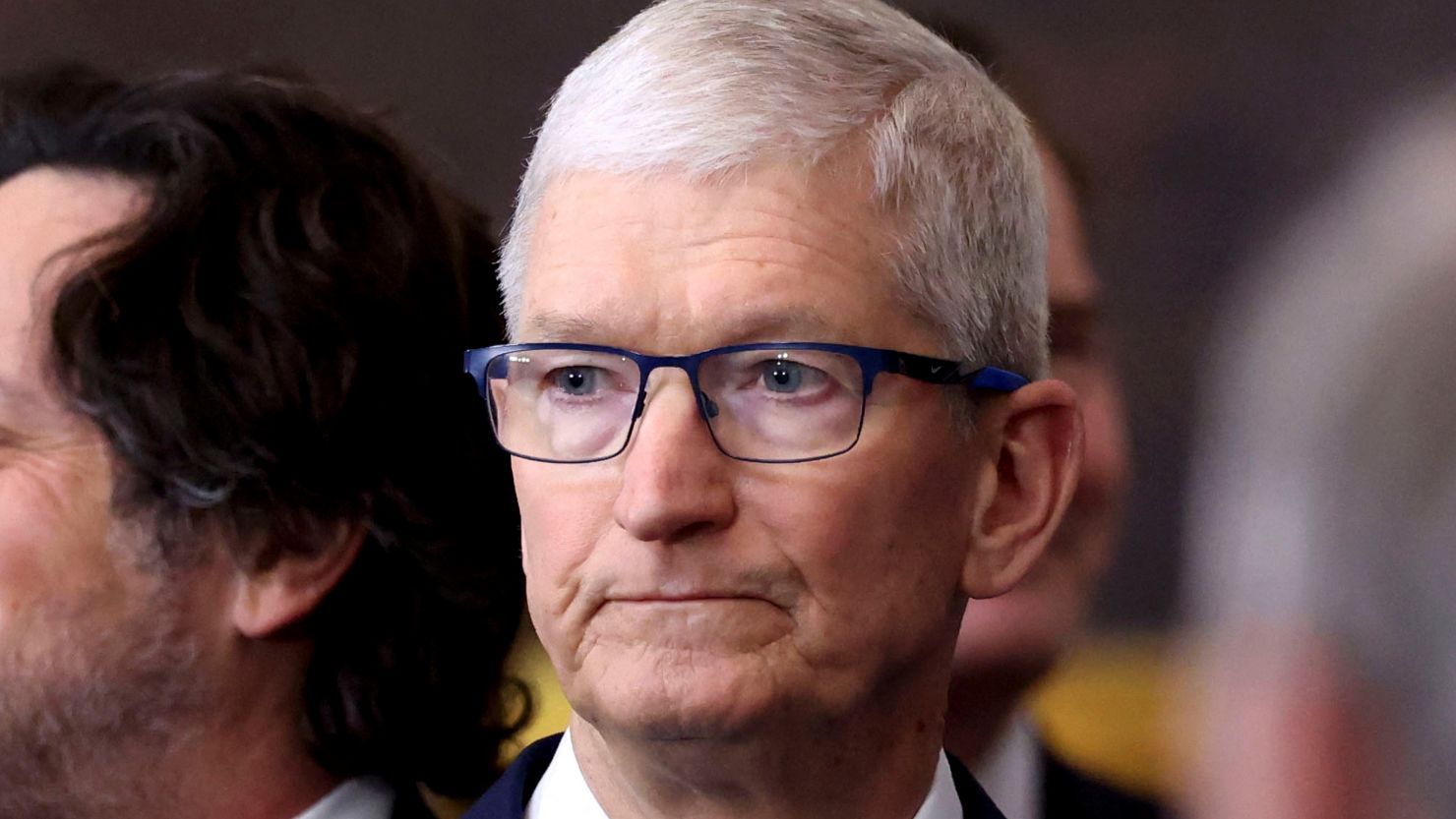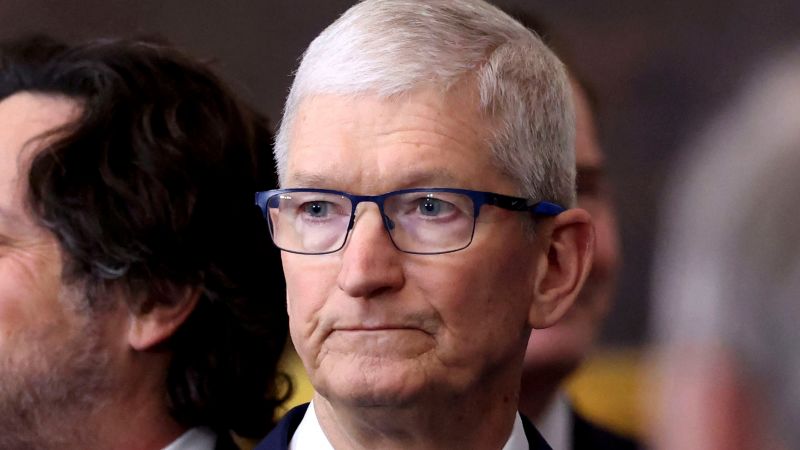The roar of the tech industry’s engine is deafening, but even amidst the cacophony, a subtle clash of titans is brewing. Donald Trump, the former President known for his bombastic pronouncements, is reportedly locked in a tense standoff with Tim Cook, the enigmatic CEO of Apple. At the heart of this conflict? The very future of iPhone manufacturing.

Trump’s Trade War and Apple’s Shifting Sands
The Growing Friction

President Donald Trump’s trade policies, marked by historic tariffs on Chinese goods, have sparked friction with tech giants like Apple. Trump’s primary objective with these tariffs was to incentivize domestic manufacturing, redress the trade deficit, and generate revenue to fund his tax cuts. However, the impact on companies like Apple has been significant, pushing them to explore alternative manufacturing strategies.
Trump’s complaints about Apple’s India manufacturing plans stem from his desire to see greater production of iPhones within the United States. In a recent statement, Trump expressed his displeasure to Apple CEO Tim Cook, stating, “I had a little problem with Tim Cook yesterday… I said to him, ‘Tim, you’re my friend. I treated you very good. You’re coming in with $500 billion.’ But now I hear you’re building all over India. I don’t want you building in India.”
While Trump asserts that Apple is increasing production in the United States, the reality is more complex.
Apple’s Balancing Act
Apple has consistently maintained its commitment to US manufacturing and job creation. In February, the company announced a $500 billion investment plan over the next four years, aimed at expanding US facilities and creating 20,000 jobs. This commitment is further evidenced by Apple’s efforts to diversify its production beyond China, a move partly prompted by pandemic-related production disruptions in the country.
However, Apple’s strategic shift to India reflects the practical realities of global manufacturing. The company’s decision to produce iPhones destined for the US market in India is primarily driven by a desire to avoid the higher tariffs imposed on goods imported from China. These tariffs have significantly increased Apple’s production costs, potentially adding $900 million to its costs in the current quarter, according to company statements.
Apple’s move towards India is a calculated risk, reflecting a complex balancing act between political pressures, economic realities, and the company’s own long-term strategic goals. The company has been actively building new factories and hiring staff in India for several years, gradually increasing its production capacity in the country. Despite these efforts, producing iPhones in the US remains a distant prospect due to the high costs associated with American labor and the intricate nature of Apple’s global supply chain.
Analysts at Wedbush Securities estimate that the cost of an iPhone could triple to $3,500 if manufactured in the United States. This stark reality highlights the significant challenges faced by the Trump administration in its ambition to bring iPhone production back to American shores.
The Roadblocks to “Made in America” iPhones
The High Costs of US Manufacturing
The dream of “Made in America” iPhones faces a formidable obstacle: the significantly higher costs associated with manufacturing in the United States compared to other countries, particularly China. Labor costs in the US are considerably higher, and the cost of raw materials and manufacturing infrastructure also tends to be more expensive. According to Dan Ives, global head of technology research at Wedbush Securities, the price of an iPhone could triple to $3,500 if they were made entirely in the US. This price jump would likely make iPhones inaccessible to a large segment of the consumer market.
The Complex Global Supply Chain
Another major roadblock is the intricate and highly globalized supply chain that Apple has meticulously built over decades. iPhones rely on a vast network of suppliers and manufacturers located around the world, each specializing in specific components or processes. Shifting this complex web of production to the US would be a monumental logistical challenge, requiring significant investment and time to establish new partnerships and infrastructure.
Feasibility of Shifting Mass Production
While some analysts believe that bringing iPhone production back to the US is theoretically possible, the practical realities make it a highly improbable scenario in the near future. The sheer scale of Apple’s iPhone production, coupled with the cost and logistical complexities involved, makes it a daunting task. Even if Apple were to invest heavily in US manufacturing, it’s unlikely that they could replicate the same level of efficiency and cost-effectiveness that they currently achieve in Asia.
A Deeper Look at the Economic Landscape
The Impact of Trump’s Trade War
President Trump’s trade war with China, which has involved imposing tariffs on billions of dollars worth of Chinese goods, has had a mixed impact on the US economy. While the administration argues that the tariffs are intended to protect American jobs and industries, critics contend that they have primarily hurt American consumers and businesses by raising prices and disrupting supply chains. The ongoing trade tensions have created uncertainty and volatility in the global economy, impacting businesses across various sectors.
Implications for American Jobs and Consumer Prices
The impact of Trump’s trade war on American jobs has been debated by economists. While some argue that the tariffs have led to the creation of jobs in certain sectors, others contend that they have resulted in job losses in other areas, such as manufacturing and retail. Furthermore, the tariffs have undoubtedly contributed to rising consumer prices for a wide range of goods, putting a strain on household budgets.
Global Competition for Manufacturing Dominance
The race for manufacturing dominance is a complex geopolitical and economic contest. China has emerged as a manufacturing powerhouse in recent decades, attracting significant foreign investment and leveraging its vast labor pool and low production costs. Other countries, such as India, Vietnam, and Mexico, are also vying for a larger share of the global manufacturing pie. The United States faces an uphill battle in regaining its former manufacturing prowess, as it must compete with countries that often have lower labor costs and more flexible regulatory environments.
Conclusion
As we conclude our examination of the CNN report highlighting a potential rift between former President Trump and Apple CEO Tim Cook over iPhone manufacturing plans, it’s clear that the issue at hand is far more complex than a simple disagreement. At its core, this debate is about the delicate balance between economic interests, national security, and the rapidly evolving tech industry. On one hand, Trump’s assertion that domestic manufacturing is crucial for national security seems to be a nod to the long-standing tension between the US and its major trading partners. On the other hand, Cook’s push for global supply chains may be seen as a counterpoint to the US-centric approach, emphasizing the complexities of international trade and the interconnectedness of modern economies.
The significance of this debate cannot be overstated, as it has far-reaching implications for the future of tech manufacturing, global trade, and the very fabric of the US economy. As the lines between national security, economic interests, and technological advancements continue to blur, it’s imperative that policymakers and industry leaders engage in a nuanced and informed conversation about the best path forward. The implications are clear: a failure to adapt to the evolving landscape could result in the US falling behind in the global tech race, with far-reaching consequences for its economic and technological prowess.
As we move forward, one thing is certain: the future of tech manufacturing will be shaped by the complex interplay between national interests, economic realities, and technological advancements. The question is, will the US be able to strike a balance between its economic and security needs, or will it falter in the face of globalization? The answer will be a testament to the nation’s ability to adapt and evolve in an ever-changing world, where the distinction between economic interests and national security has become increasingly fluid.
